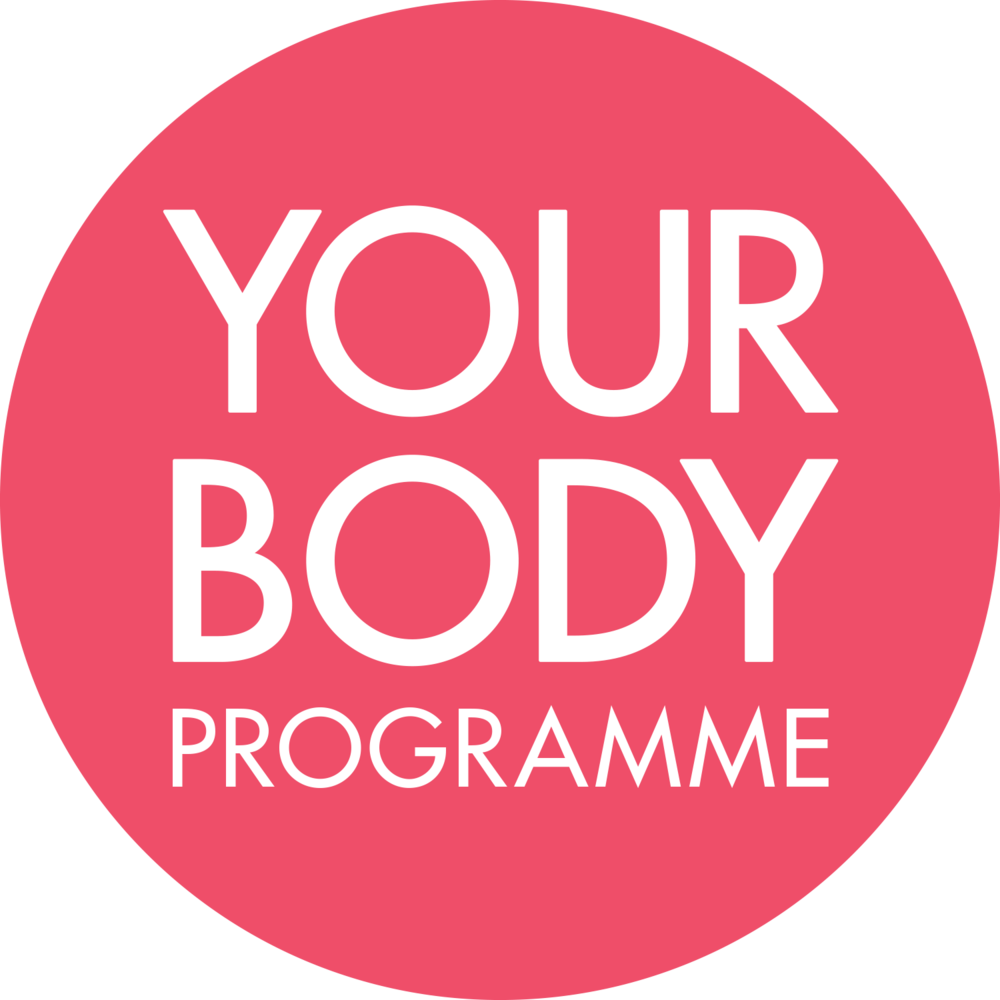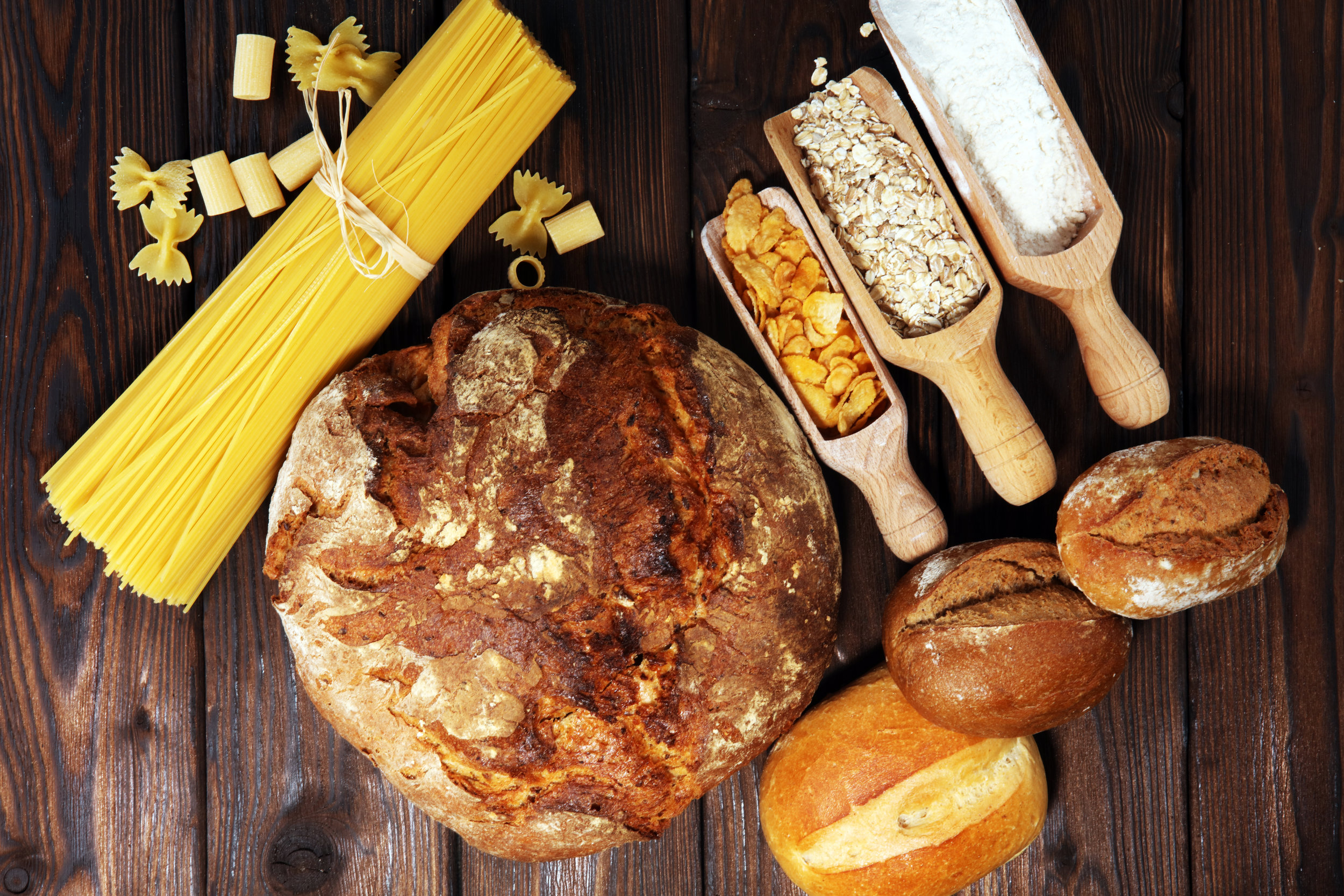Carbohydrates
Carbohydrates are the body’s preferred source of fuel. Consumed carbohydrates either need to be used immediately or stored as glycogen.
Carbohydrates have received bad press over the years due to their association with fat gain. It’s true that eating the wrong type of carbs in the wrong amounts and at the wrong time of day will cause fat gain. Whether the body uses or stores the carbs depends on your glycogen (stored carbohydrate) status, and your activity level. When your blood sugar levels drop (hours without food or 25-30 minutes into a workout), glycogen will be released for fuel. Only a finite amount of glycogen can be stored, so it's essential to spread your carbohydrates throughout the day rather than eating too much at one sitting. Eating more carbohydrate than your body needs at any point will inevitably lead to it being converted to fat, a process called De novo lipogenesis. Whether you eat carbohydrates before bed depends on your goal and body type (see your individual nutrient table).
Eating some complex carbohydrates when you wake will provide some much needed energy to start the day, ensure glycogen stores are full for training and stop any muscle breakdown. How much and how long before training depends on your body type and goal (check your personal nutrition table).
The importance of carbs around your workout
Post workout your blood sugar and glycogen stores will have depleted, the longer and more intense the workout then the greater the depletion. Protein is also important at this time, however blood sugar and glycogen replenishment is the most important thing for your body. This is when the simple, fast acting carbohydrates are required as your body is sensitive to the refuelling and recovery effects of insulin (check your nutrition table for the recommended post workout carb and protein amounts).
It’s essential to replenish your glycogen stores post training. The body stores the carbohydrates we eat as glycogen. Glycogen is a multi-branched polysaccharide of glucose (single unit of carbohydrate). Our second long-term energy store, glycogen is made in the cells of the liver and muscles. It is this energy reserve that is actually converted back into glucose during the training session. The more intense the session, the more is used. Light or low intensity exercise/activities utilise the first long-term energy store, which is fat (this doesn’t mean you should be doing low intensity training to lose fat. Read your cardio section on your profile page for more info).
Each molecule of glycogen is hydrated with three to four parts water. This stored glycogen is important in helping prevent muscle catabolism (breakdown). At YBP we don’t advocate extreme low carbohydrate diets (Ketogenic). The carbohydrate amount we estimate is based on your body type, goal and daily activity levels. Low carbohydrate diets are less than 150g per day, an extremely low carbohydrate (ketogenic) diet is below 50g per day. For more information on this you can read our dedicated article on ketosis.
Low carbohydrates in the diet will lower thyroid hormone output as it tries to slow metabolism, in order to prevent starvation. It will also cause low insulin production which in turn will increase sodium loss through the kidneys, which coupled with high intensity interval training can leave you dehydrated and deficient in the important electrolytes. This will cause bloating, lightheadedness, headaches, fatigue and constipation. It’s important to balance blood sugar and have a slow controlled release of insulin, but like everything in the body homeostasis is key, too much/little is not advised. Too little carbohydrate will cause a depletion of glycogen, which will subsequently lead to fatigue, especially during high intensity workouts, when you will want to have plenty of energy. It will also lead to the breakdown of protein from muscle. Conversely, eating too much carbohydrate, the wrong type and at the wrong time, will lead to too much insulin being produced by the cells in the pancreas and consequently fat gain. YBP have given you a base reference carbohydrate intake point to start from. This base point may change depending on the information we receive from your monthly feedback form.
The importance of balanced blood sugar
Keeping your blood sugar (glucose) balanced throughout the day is not only essential to prevent fat gain but it also prevents many other symptoms such as low energy, mood swings, depression, low immunity, inflammation, headaches, dizziness, the need for more than 8 hours sleep, the need for tea or coffee to get going, frequent urination, heavy sweating, cravings for sweet foods, palpitations and feeling thirsty. Throughout the day blood glucose levels may fluctuate outside of the body’s desired blood glucose range. Blood sugar levels rise after a meal, stimulant or stress. If you are stressed, eat high glycemic carbohydrates or if you drink too much caffeine you will experience an initial rise in blood sugar, followed by a crashing down to below the desired levels. Insulin is a hormone responsible for keeping the blood sugar levels within the normal desired range. Insulin works by opening channels on cell membranes to facilitate glucose uptake from blood into the cell.
Foods that can harm your blood sugar balance
To help keep your blood sugar within a healthy range try to avoid refined foods (white bread, white pasta, white rice), sugary foods (confectionary, sugary drinks), convenience foods (they often contain hidden sugars and can be high in saturated fats) and stimulants (tea, coffee, alcohol, chocolate).
Foods to help keep your blood sugar stable
Instead, eat foods that balance blood sugar such as whole grains (complex carbohydrates, which release sugars slowly into the blood so provide sustained energy and help balance blood sugar). These include brown rice, quinoa, buckwheat, sweet potato, whole grain pasta and wholegrain bread. Oats are particularly good, making them an excellent choice, particularly for breakfast.
Aim for seven pieces of fresh fruit and vegetables per day, ideally having two pieces of fruit and five portions of vegetables (a single portion is around 80g). Fresh fruits and vegetables are a good source of fibre and contain essential vitamins and minerals that are needed for blood sugar balance and general health. Try to include a wide variety of colours including dark green leafy vegetables such as broccoli, spinach and kale.
Essential fats, found in oily fish, nuts, seeds and their oils, improve insulin’s ability to transport glucose out of the blood into cells. Although we do not advocate eating low carbohydrate diets at YBP, certain body types who tend to be intolerant to large amounts of carbohydrates will need to eat less than other body types, but still not an extremely low carb diet. The more sedentary a person is the less carbohydrates they will need. All these factors are taken into consideration from the information gathered on your YBP questionnaire to give you the most accurate carbohydrate estimation possible.
You should include a protein source at each meal and snack, ideally a source that does not contain high levels of saturated fats. Protein slows digestion which creates a slower release of sugar into the bloodstream and subsequently a gradual, even release of insulin. Fibre found in fruit, vegetables, whole grains, beans and lentils also help slow the absorption of sugars into the bloodstream.
Drink plenty of water (mineral/filtered if possible), herbal / fruit teas and diluted fruit juices.
Eating little and often is the way to help your body keep blood sugar balanced, so include healthy snacks in your diet.
What is glycogen?
Glycogen is the stored form of carbohydrate. A majority of glycogen is stored in skeletal muscle and the liver. The average human weighing 68kg can store between 60-120 grams (250-500 calories) in the liver and 200-500 grams (800-2000 calories) in skeletal muscle.
After a meal (postprandial), blood sugar levels rise, which is the trigger for the pancreas to secrete the hormone insulin. The blood sugar enters the liver cells (hepatocytes) via the portal vein. Several enzymes, primarily glycogen synthase, are stimulated by the action of insulin on the liver cells. Glucose is than added to the chains of stored glycogen (glucogenesis). Once the meal has been digested blood sugar and sequentially insulin levels drop, and glycogenesis stops. Under the influence of the hormone glucagon, when energy is needed the opposite process takes place. An enzyme called glycogen phosphorylase breaks down glycogen and converts it back to glucose (glycogenolysis).
Glucagon also initiates the breakdown of non-carbohydrate substrates (gluconeogenesis), such as fat and protein (glycerol and amino acids respectively). Glycogen stored in muscle cells appears to act as instantaneous fuel, providing glucose for working muscles. Muscle glycogen can only be used for internal use, as muscle cells do not possess the enzyme (glucose-6-phosphatase) required, which hepatocytes do, to allow glucose to pass into the bloodstream.
What happens to the carbohydrate we eat depends on several factors. If our glycogen stores are full any consumed carb will either be used for energy if you are being physically active or converted to fat (de novo lipogenesis) and stored in adipose tissue if you are sedentary. If glycogen stores are depleted due to a low carbohydrate diet, or an intense exercise session, any consumed carbohydrate will be used to replenish glycogen stores. If you are not consuming adequate carbohydrates to replenish liver glycogen stores non-carb substances (fat and protein) will be broken down and converted to glucose and then glycogen. The liver provides essential energy for the organs, not least the brain.
How much glycogen you oxidise during a workout depends on several factors. The duration, intensity and type of workout, how trained the individual is, the status of the glycogen stores and what carbs have been consumed before and during the exercise.
Glycogen is attached to water, for every gram of glycogen there are 3 to 4 grams of water. It’s common when on a diet to lose a significant amount of weight in the first couple of weeks, and after this period fat loss stabilises. Many diet fads promise weight loss in a week, what they don’t say is that the weight loss will come predominantly from glycogen and the attached water.
For example:
Let's say there is a 68 kg man and his glycogen stores are full. A man of this weight will hold approximately 500 grams (2000 calories/4 calories per gram for carbohydrate) of muscle glycogen, attached to around 1,500 grams of water. Added together this comes to 2kg/4.4lbs. Burning 2000 calories from muscle glycogen will give you approximately a 2kg weight loss. How fast this is achieved depends on exercise frequency, intensity and of course the diet programme. Let's say it took a week. When the body starts to use fat stores for fuel the rapid loss will slow considerably. There are 3500 calories in a pound of fat (9 calories per gram). To lose the same 2kg/4.4lbs of weight from fat would require burning 15,400 calories, which would take about 7 to 8 weeks.
Most people’s goal on a fat loss diet is to deplete glycogen stores by reducing carbohydrate and increasing exercise, subsequently moving into a ketogenic state. The ketogenic diet is probably the quickest way to lose fat, but not the healthiest. Losing fat gradually is the healthier and more attainable and maintainable approach.
During a resistance-training workout we burn roughly 30 to 40 percent of our muscle glycogen, while during a high intensity fat loss style programme this increases to approximately 60 to 75 percent. It’s essential to replenish muscle glycogen within 2 hours of training, after this timeframe replenishment capacity decreases by 50 percent.


